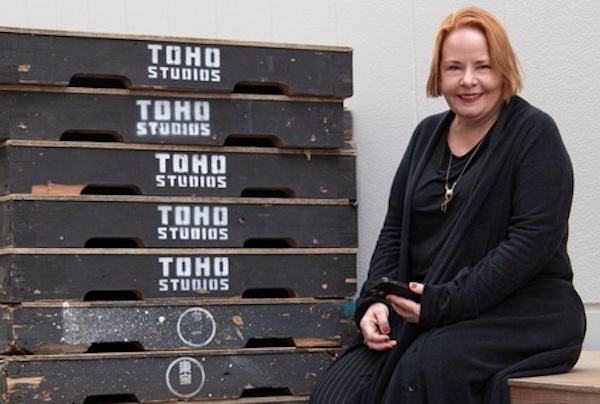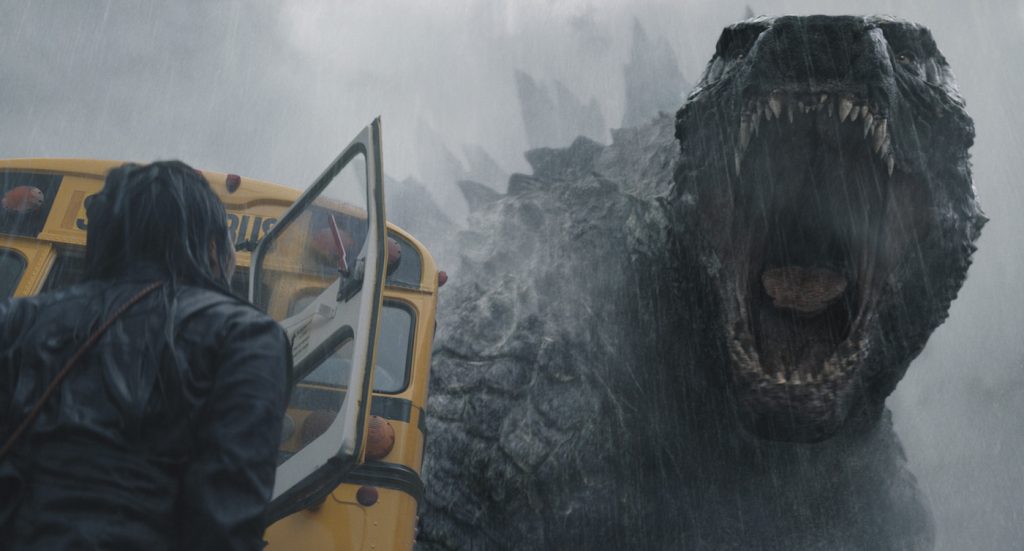From “Monarch: Legacy of Monsters” to “Bullet Train,” Producer Georgina Pope Has Her Eyes on Japan
Georgina Pope has been the go-to producer for overseas projects shooting in Japan for decades. She’s navigated the country’s cultural, logistical, and technical landscape and film industry to help bring a panoply of projects to fruition. As head of production at Twenty First City in Tokyo, her list of credits includes Earthquake Bird, Bullet Train, Snake Eyes: G.I. Joe Origins, Kumiko the Treasure Hunter, Gran Turismo, as well as streaming fare such as Monarch: Legacy of Monsters, Queer Eye: We Are in Japan!, Giri/Haji and the upcoming Sunny for Apple +, a dark comedy set in Kyoto.
In addition to finding the best Japanese locations and crews for international projects, Pope has for many years argued for a better system of shooting permits, enhanced production incentives, and easier access to information for filmmakers coming to the country. Japan announced a pilot incentive program in September of 1 billion yen, around $6.9 million at current exchange rates, by far the largest to date but still less than offered elsewhere. Hopes are high that in April this year, the program will be renewed, expanded, and established for the long term. Pope gave the keynote speech and appeared as a panelist at a Motion Picture Association’s seminar on the topic at the Tokyo International Film Festival in November.
After more than 30 years in the industry, the affable Aussie formed TOHO Tombo Pictures, a joint venture with local giant Toho, the studio and distributor behind Godzilla and many of Akira Kurosawa’s most iconic films.
The Credits spoke to Pope at her new offices in Toho Studios in Tokyo, where visitors are greeted at the gate by a statue of Japan’s most famous cinematic monster and a giant Seven Samurai mural.

How did you come to be in the film business in Japan?
I went to art school and studied painting, and thought the canvas was a little small. Then, I got interested in film and worked in Australia, and I was also interested in Japan. I came here and started off by selling Australian films and organizing film festivals. Those were the days of the economic bubble, and Japan’s foreign ministry would knock on the door and say: ‘Here’s a whack of money; organize a film festival in Tokyo of Australian films and one for Japanese films in Sydney.’
In terms of selling Australian films in Japan at that time, how did that work?
Thanks to the festival funding, I had the budget to subtitle films, which, back in those days, was a big process. You had to buy a new 35mm print to get all the work done. That was a chance to then show those films to distributors. I handled sales for things like Picnic at Hanging Rock and a lot of 70s and 80s Australian films that had never been sold here and never really been promoted here. In those days, the Japanese video market was booming, and people were hungry for product. I always wanted to be on the arty side of it, but I ended up very swiftly becoming involved in the distribution side.
Then you set up the Twenty First City production company in 1991?
Right, with the big dream of making movies, but I had no idea what I was doing. The first film I did was a co-production between [public broadcaster] NHK and Channel Nine in Australia. It’s a lovely little film called The Last Bullet. It featured Japanese rock stars Koji Tamaki and Jason Donovan. It was cat and mouse in the jungle in Borneo in the last days of the Second World War. At that time, people were still doing pre-sales, so I could broker deals for Australian filmmakers to get a little bit of a pre-sale. I did Heaven’s Burning with Russell Crowe and Youki Kudoh, which wasn’t a co-production but had an element of Japanese finance and a pre-sale. Russell wasn’t really known at the time; he’d just finished shooting LA Confidential.
What other projects did you work on in the early days?
One day, a lady from a production company and ad agency in Sydney called me and said: “We’ve got to shoot this Qantas commercial, and we need somewhere beautiful with pearl divers.” I didn’t advertise and didn’t really know much about the advertising world. But, there wasn’t anyone here in Japan who was dedicated to helping overseas producers shoot here. And the phone just started ringing. And to this day, I still do commercials. I like them. They come in, they’re short, they’re sweet. They’re challenging. It’s a good chance for me to try out different crew and different gear. I just shot one with the director Hiro Murai (Atlanta, The Bear, Station Eleven). I think commercials are good for a production company to have in the wheelhouse. A lot of great American directors and cinematographers love coming to Japan to shoot a commercial when they’re between gigs. And they’re great for my team.
You ran production at Twenty First City for over 30 years. What were some of the highlights?
One of my favorite projects ever was Gaspar Noé’s Enter the Void. That opened the door to other European directors like Isabelle Coixet and Doris Dörrie and showed people, particularly Europeans, that we could make great films here in Japan in a compact, inexpensive way by bringing over just a handful of people. A couple of actors, a cinematographer and assistant director, the director and a couple of producers, sometimes as few as half a dozen people. Then, we crew it up with a local crew and apply the rules and scale of Japanese filmmaking, where we all pitch in and do a lot of good comprehensive preparation.
Talking about different ways of working, what are some of the biggest differences with international crews and how have you handled them?
At the end of the day, there aren’t really any differences. It’s all done in the same manner. Something that I always tell visiting producers, especially for the bigger projects is that we need real lead time here to work on locations. Endless meetings and cups of green tea and discussion and forms and diagrams. But once you get all that done, Japan does want to host films. There are technical differences between the UK and US crews, and they’re always sorted out quickly. For example, the Japanese system often has four assistant directors. One is liaising with the art department, one with the wardrobe department, and one with the actors. I’ve found on recent films that we’ve created a hybrid of the Japanese and the American systems. I reckon American film crews will adopt some of our AD structures in the future because they’ve realized it’s not a bad way to work in a place like this.
You’ve been a big advocate for a Japanese production incentive program. What is your take on the recently announced initiative, and what else needs to be done?
The value of having an incentive system is now well documented, with the actual return on every incentive dollar coming in at five, six, or seven dollars. And Japan, especially in rural areas, really needs that Invigoration. But what has to happen is a simple uniform percentage-based system. And to look at what happens in places like Australia, New Zealand, the UK, and Thailand. Right now, it still seems to be a shared purse, which means that producers can’t really plan for it. Producers need to be able to calculate, to know that if they’ve got a project coming into Japan and their spend is this, the incentives will bring in this amount. That could be pretty easily straightened out.
What does the future hold for you and TOHO Tombo?
I’m doing three things. Setting up the best production services shop in town. Running multiple projects with top-notch crew to service American and any overseas work. That’s going to be a big, big element of the company. Secondly, I’m diving into the vaults of TOHO to see what IP that could be remade with international film partners. Obviously, the kaiju world [monsters such as Godzilla] is very much spoken for, doing very well, and doesn’t need my help. But there are real treasures in there. Nothing I can announce yet. Many important overseas filmmakers are interested in what’s in those vaults. Finally, I believe that with the massive global interest in Japan, there is a market for edgy English language drama and genre films that can be made at a reasonable price but appeal to global markets. I am developing a slate of these lower-budget films. The first one will be a project that I’ve co-written and I plan to direct, which is a sexy little thriller set in one night in Tokyo. I plan to do that this year and follow that with other titles in the not-too-distant future.
Featured image: Monarch: Legacy of Monsters. Courtesy Apple TV.




